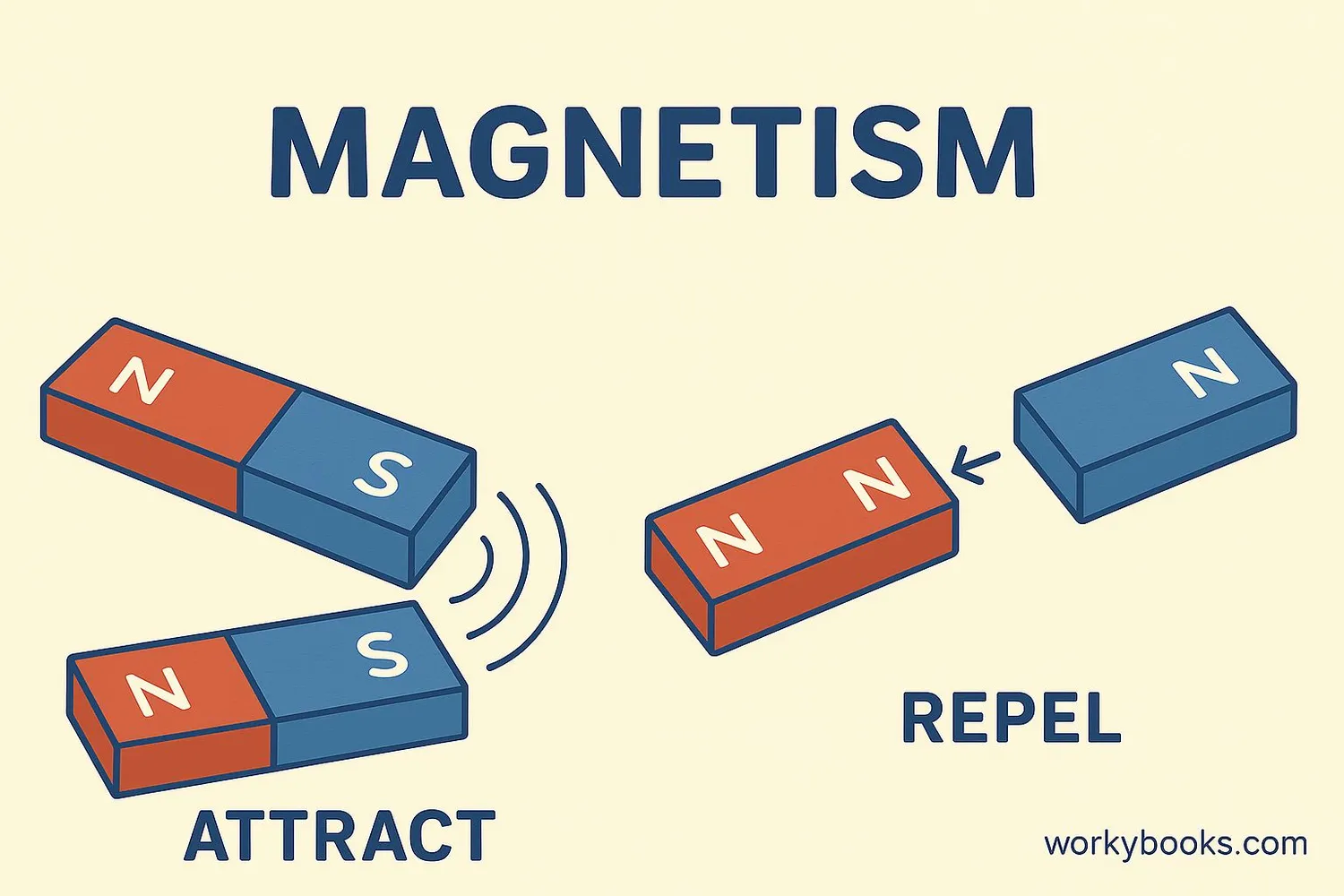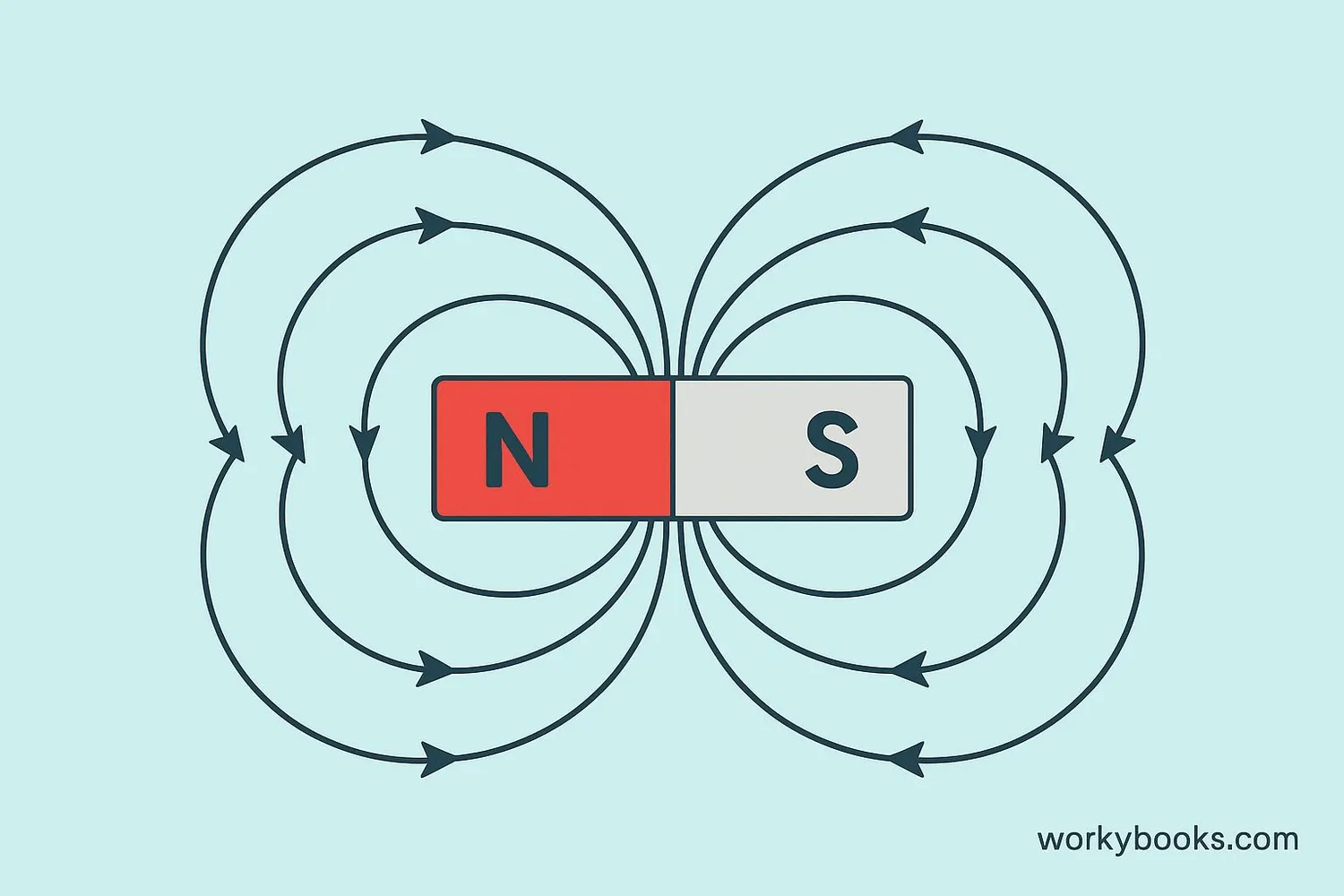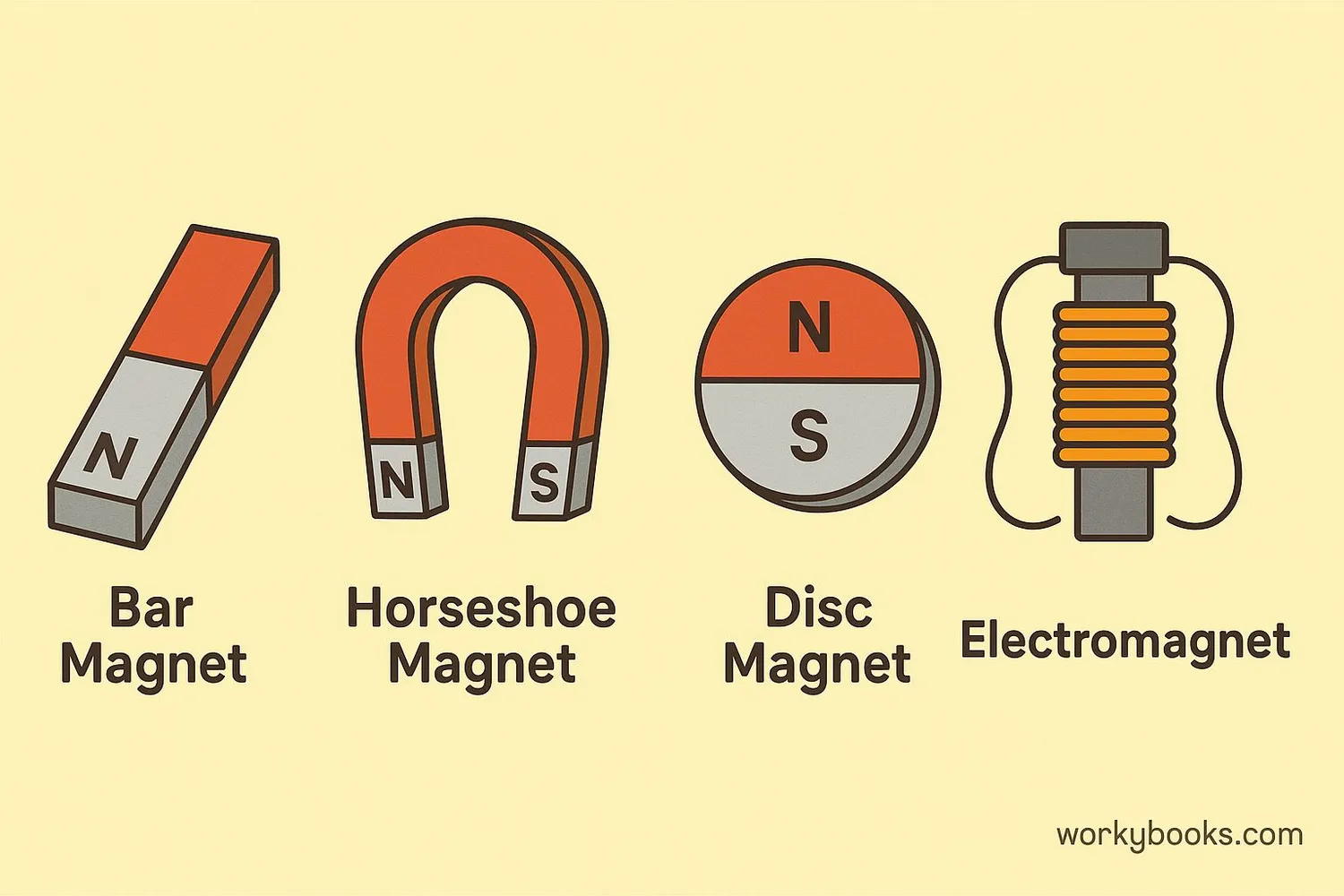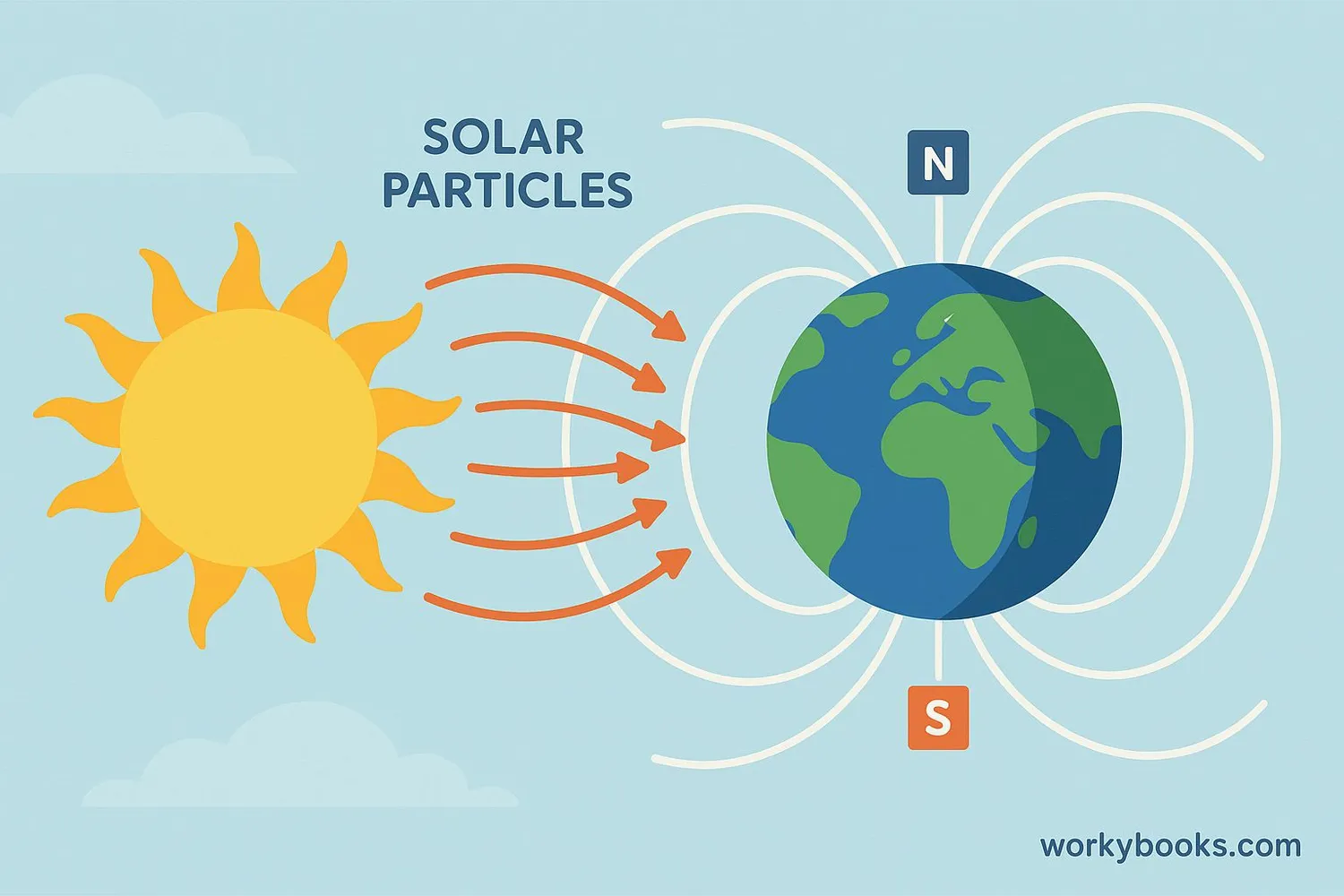Magnets and Magnetism - Definition, Examples, Quiz, FAQ, Trivia
Discover the invisible forces that make magnets work!
What is Magnetism?

Magnetism is an invisible force that can attract or repel certain materials. Magnets have two ends called poles - the north pole and the south pole.
The most important rules of magnetism:
• Opposite poles attract each other (North attracts South)
• Like poles repel each other (North repels North, South repels South)
• Magnets can attract objects made of iron, nickel, or cobalt
• The force of magnetism works through air, water, and some other materials
Every magnet creates an invisible magnetic field around it where its magnetic force can be felt. This field is strongest at the poles.
Did You Know?
The word "magnet" comes from Magnesia, a region in Greece where magnetic rocks were first discovered!
How Magnets Work

Magnetism comes from the movement of tiny particles called electrons inside atoms. In most materials, these electrons point in random directions and cancel each other out. But in magnetic materials, many electrons spin in the same direction, creating a magnetic field.
Key concepts:
Magnetic domains: Groups of atoms where electrons are aligned in the same direction. When these domains line up, the material becomes magnetic.
Magnetic field: The area around a magnet where its force can be felt. Magnetic field lines flow from the north pole to the south pole.
Permanent magnets: Keep their magnetism for a long time because their domains stay aligned.
Temporary magnets: Only act as magnets when they are near a strong magnetic field.
Electrons
Tiny particles with electric charge that spin like tops
Alignment
In magnets, electrons spin in the same direction
Magnetic Field
Created by aligned electrons, strongest at poles
Force
Attracts or repels other magnetic materials
Types of Magnets

Magnets come in different types and shapes:
Natural magnets: Found in nature, like lodestone (magnetite).
Artificial magnets: Made by people from magnetic materials. These include:
• Bar magnets
• Horseshoe magnets
• Disc magnets
• Ring magnets
Hard magnets: Keep their magnetism for a long time (like refrigerator magnets).
Soft magnets: Lose their magnetism quickly (like iron nails that become temporary magnets).
Electromagnets: Magnets created by electricity flowing through a wire coil. These are special because:
• We can turn them on and off
• We can make them stronger by adding more coils
• We can reverse their poles by reversing the electric current
Electromagnet Power!
The strongest electromagnets can lift entire cars in junkyards! They're turned on to pick up the car, then turned off to drop it.
Earth's Magnetic Field

Our planet Earth is like a giant magnet! Deep inside the Earth, the movement of molten iron creates a magnetic field that surrounds our planet.
Earth's magnetic field:
• Has a north magnetic pole near the geographic south pole
• Has a south magnetic pole near the geographic north pole
• Extends thousands of miles into space
• Protects us from harmful solar wind particles
Compasses work because of Earth's magnetic field. A compass needle is a small magnet that aligns with Earth's magnetic field, always pointing toward the magnetic north pole.
Fun fact: Earth's magnetic poles actually move over time! The north magnetic pole is currently moving about 40 miles per year.
Navigation
Compasses use Earth's magnetic field for direction
Protection
Magnetic field shields Earth from solar radiation
Migration
Animals like birds use it for navigation
Uses of Magnets

Magnets are all around us! Here are some common ways we use magnets:
Refrigerator Magnets
Hold notes and photos on metal surfaces
Credit Cards
Magnetic strip stores information
Automatic Doors
Use magnets to detect movement
Speakers
Use electromagnets to create sound
Electric Motors
Use magnets to convert electricity to motion
MRI Machines
Use powerful magnets to see inside the body
Without magnets, we wouldn't have many modern technologies like computers, televisions, or electric cars. Magnets are essential for generating electricity and powering our world!
Magnetism Quiz
Test your magnetism knowledge with this fun quiz! Answer all 5 questions to see how much you've learned.
Frequently Asked Questions
Here are answers to some common questions about magnetism:
Fun Magnetism Trivia
Discover some amazing facts about magnets and magnetism!
Magnetic Space
Neutron stars have the strongest magnetic fields in the universe - trillions of times stronger than Earth's! They're called magnetars.
Animal Magnets
Cows and deer tend to align their bodies north-south when grazing! Scientists think they sense Earth's magnetic field.
Medical Magnets
MRI machines use magnets 60,000 times stronger than Earth's magnetic field to create detailed images of the inside of our bodies!
Floating Trains
Maglev trains use powerful magnets to float above the track, reducing friction and allowing speeds over 375 mph (600 km/h)!


